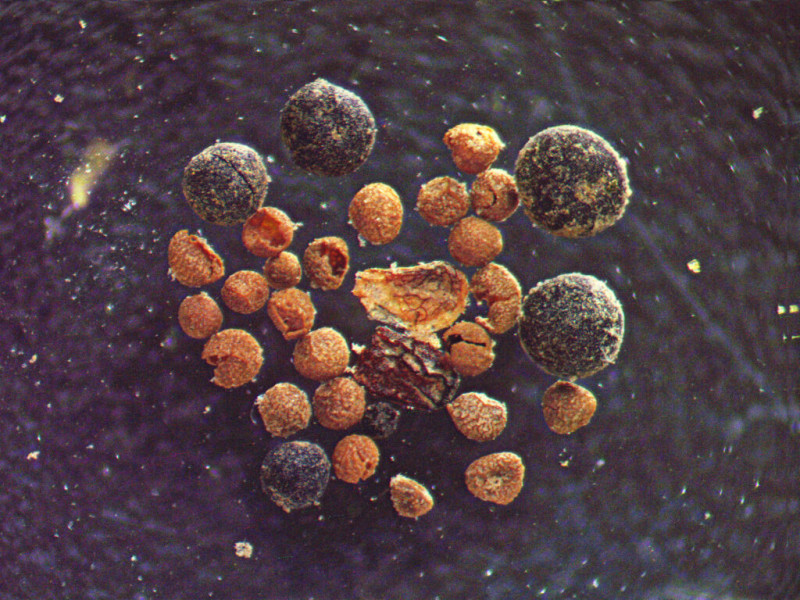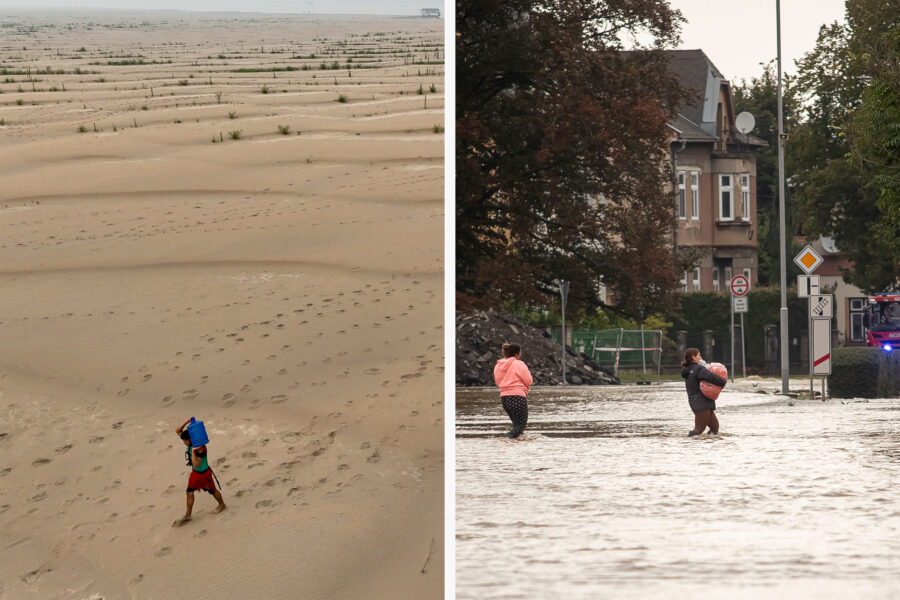New Study Reveals Signs of an Ancient Tundra Ecosystem Beneath Greenland’s Thickest Ice
Sometime in the past 1.1 million years, the thickest part of the Greenland Ice Sheet melted completely, scientists said in a study released today that analyzed fossilized bits of moss, wood shards, insect and fungi fragments, as well as the seed of an Arctic poppy.
The samples, gathered decades ago from beneath 2 miles of ice, show there was a rocky tundra landscape in central Greenland, with patches of moss, willows, flowers and bugs, when the ice melted at a global average temperature close to the level projected for the end of this century.

The new paper’s findings, published in the Proceedings of the National Academy of Sciences, should put to rest any lingering doubt that the Greenland Ice Sheet is very sensitive to warming of just a few degrees Celsius, said lead author Paul Bierman, a University of Vermont geologist.
“There are people … who kept saying, ‘it’s just the edge of the ice sheet, you’re worrying too much,’” he said. “Now that we have this set of fossils … it completely shuts down the argument of, ‘Oh, don’t worry about the rest of the ice sheet.’”
The fossil samples were found in the bottom of a two-mile ice core drilled in 1993 at a site called GISP2, near the summit of the ice sheet. If all the ice of the sheet below melted, it would raise sea level by 24 feet (7.4 meters). Bierman said the fossils are beautiful but raise “from bad to worse” concerns about the effects of the current warming of the climate caused primarily by burning fossil fuels.

If the ice covering the center of the island was melted, he said, then most of the rest of it had to be melted too, “and probably for many thousands of years, enough time for soil to form and an ecosystem to take root.”
“We now have direct evidence that, not only was the ice gone, but that plants and insects were living there,” he said. “And that’s unassailable. You don’t have to rely on calculations or models.”
Explore the latest news about what’s at stake for the climate during this election season.
Similar evidence came from a 2016 study showing a “cosmic ray burn” in Greenland rocks that are also now covered with two miles of ice, “from a time within the last million years or so, when temperatures were not much higher than now,” said Richard Alley, a Pennsylvania State University geoscientist who was not involved in the new study.
“The new paper confirms and extends that information, showing that the ice was gone long enough to establish a tundra ecosystem recognizably similar to cold modern ecosystems,” he said. The record doesn’t show the exact temperature or how fast the ice melted, but the new study “confirms that a lot of sea-level rise occurred at a time when causes of warming were not especially extreme, providing a warning of what damages we might cause if we continue to warm the climate.”

Co-author Halley Mastro, a paleoclimate researcher at the University of Vermont, spent long hours studying the biological remnants under a microscope, and said the finding was not a total surprise. Previous studies from the same core sample of gas bubbles in ice layers above the sediments had elevated levels of organic compounds like nitrogen that couldn’t be explained with atmospheric variations, leaving ground-level organic material as the likely source.
Like Bierman, Mastro thinks the organic sediments date back to an interglacial period about 400,000 years ago, when carbon dioxide levels were probably much lower than today, but summertime temperatures were higher and ocean currents quite different than now. Comparable samples taken under thinner ice, at Camp Century in northwest Greenland, were stored in a way that enabled more accurate dating.
Greenland Meltdown Already Intensifies Climate Extremes
Research published in January 2024 showed that scientists had previously been underestimating Greenland’s rate of ice loss by about 20 percent, and other recent studies show new threats, like huge areas of accumulating slush, as well as an increase in extreme rainfall and a newly documented web of micro-cracks on the ice sheet that could also speed melting.
Along with raising the level of oceans, water flowing into the North Atlantic from Greenland’s melting ice and other parts of the Arctic is also contributing to extreme weather in Europe, according to a March 2024 study. And that same influx of icy water is probably also disrupting the Atlantic Meridional Overturning Current (AMOC), which carries heat from the equator toward the Arctic. A failure or significant weakening of the AMOC would have disastrous climate consequences, especially in Europe, including the potential collapse of agriculture in northern Europe.
Bierman said global warming is eating away at the ice sheet edges, but also melting it from the top, with worrisome feedback loops. At the periphery, when the ice melts, it exposes darker rocks and ground that heat up and accelerate the melting of the edges. And as the elevation of the top of the ice sheet drops, it warmer layers of the atmosphere also speed melting.

As the ice sheet summit lowers, eventually snow will stop accumulating, and “that’s the end of the ice,” he said. “I think that’s the real fear, why we should be frightened.”
In 2023, scientists showed conclusively that the 2000-2010 period was the warmest decade on record in at least 1,000 years on the surface of the ice at the summit of the Greenland Ice Sheet.
Joseph MacGregor, a research scientist with the NASA Goddard Space Flight Center, who was not involved in the new study, said scientists had already suspected that the ice sheet melted during one of the interglacial periods in recent geological history.
The new study bolsters the case that “Greenland’s landscape could look very different in a few generations if anthropogenic warming continues its present path,” he said.
“The common and still relatively popular perspective is that the Greenland ice is more stable than parts of the Antarctic Ice Sheet,” he said. “That may still be true, but Bierman’s study helps build the case that the Greenland Ice Sheet is still quite sensitive to warming.”
Bierman said none of the Greenland changes should be a surprise to anybody who’s been watching and listening to science during the past few decades, “but the rapidity at which it’s caught up to us is a bit surprising.”
About This Story
Perhaps you noticed: This story, like all the news we publish, is free to read. That’s because Inside Climate News is a 501c3 nonprofit organization. We do not charge a subscription fee, lock our news behind a paywall, or clutter our website with ads. We make our news on climate and the environment freely available to you and anyone who wants it.
That’s not all. We also share our news for free with scores of other media organizations around the country. Many of them can’t afford to do environmental journalism of their own. We’ve built bureaus from coast to coast to report local stories, collaborate with local newsrooms and co-publish articles so that this vital work is shared as widely as possible.
Two of us launched ICN in 2007. Six years later we earned a Pulitzer Prize for National Reporting, and now we run the oldest and largest dedicated climate newsroom in the nation. We tell the story in all its complexity. We hold polluters accountable. We expose environmental injustice. We debunk misinformation. We scrutinize solutions and inspire action.
Donations from readers like you fund every aspect of what we do. If you don’t already, will you support our ongoing work, our reporting on the biggest crisis facing our planet, and help us reach even more readers in more places?
Please take a moment to make a tax-deductible donation. Every one of them makes a difference.
Thank you,
David Sassoon
Founder and Publisher
Vernon Loeb
Executive Editor
Share this article
Disclaimer: The copyright of this article belongs to the original author. Reposting this article is solely for the purpose of information dissemination and does not constitute any investment advice. If there is any infringement, please contact us immediately. We will make corrections or deletions as necessary. Thank you.








